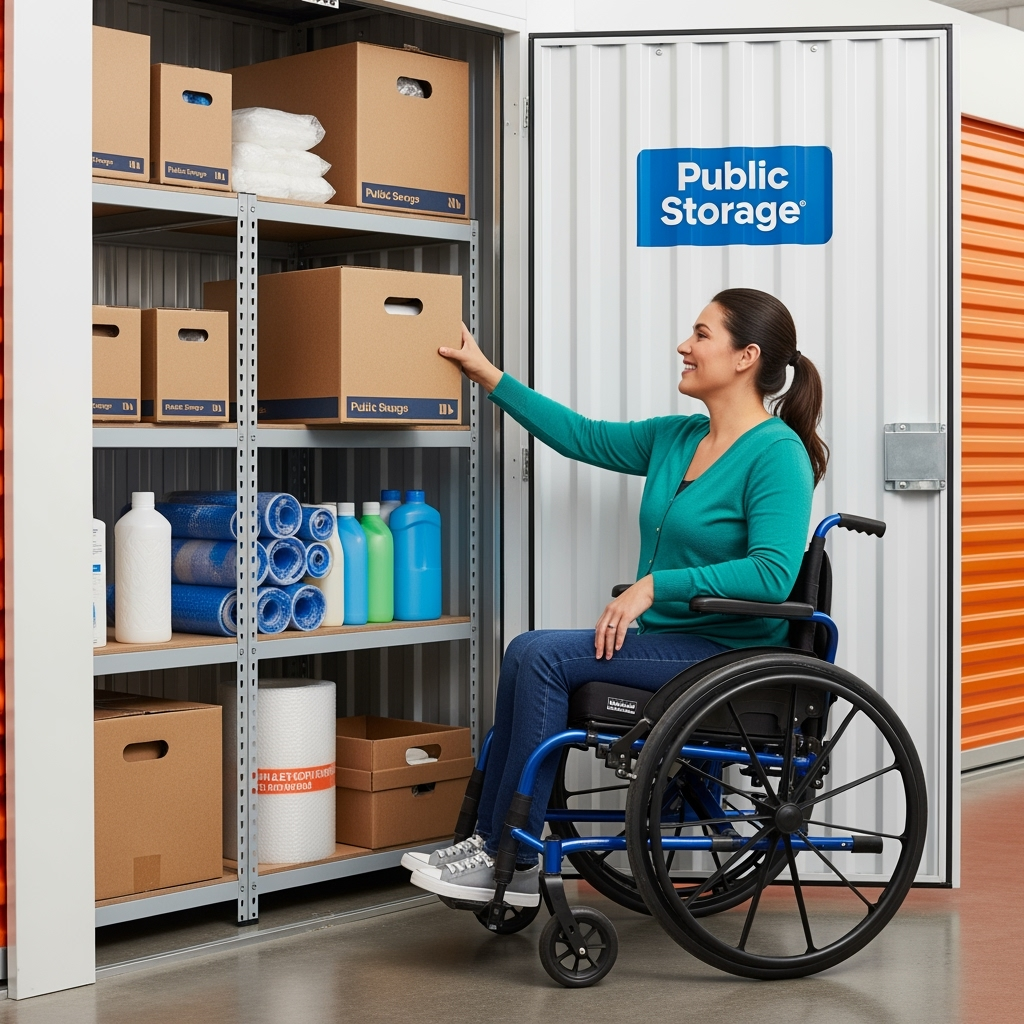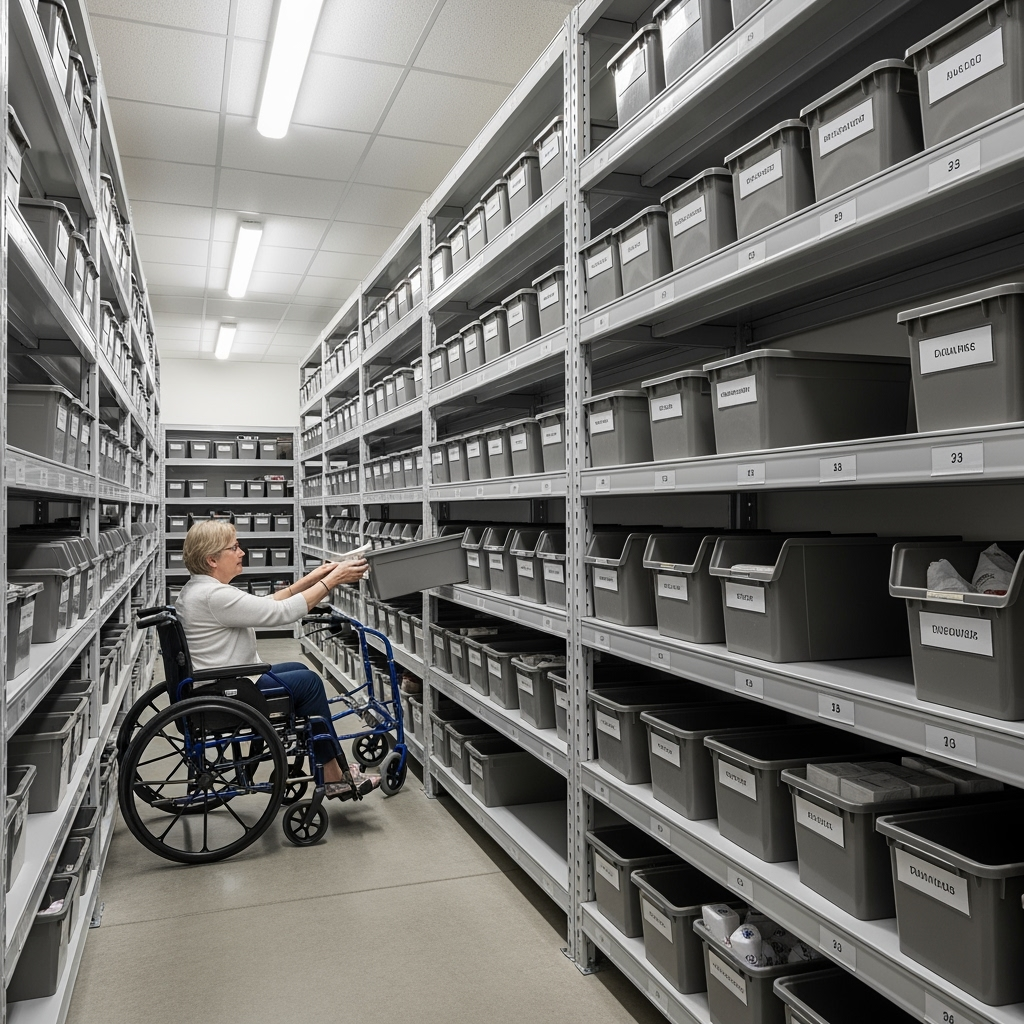Creating an Accessible Moving Experience with Public Storage
Moving can be challenging for anyone, but wheelchair users face unique considerations when it comes to organizing, storing, and accessing their belongings. This comprehensive guide will help you create an accessible, efficient moving and storage plan that prioritizes independence and ease of use.

Choosing the Right Storage Unit for Accessibility
When selecting a storage unit, several key features can make a significant difference in accessibility and usability:
- Ground-Level Access: Choose units with no steps or barriers for easy wheelchair navigation
- Wide Entrances: Look for doors at least 36 inches wide to accommodate wheelchairs comfortably
- Climate Control: Consider climate-controlled units to protect medical equipment and sensitive items
- Smooth Flooring: Ensure the unit has level, non-slip surfaces for safe navigation
- Adequate Turning Space: Select a unit size that allows for a full wheelchair turning radius (usually 5 feet)
Smart Organization Strategies for Wheelchair Users
Proper organization is crucial for maintaining independence and easy access to your belongings:

Height-Conscious Storage Solutions
- Install adjustable shelving at wheelchair-accessible heights (typically between 15-48 inches)
- Use pull-down rods and hooks for hanging items
- Implement roll-under spaces beneath workstations or storage areas
- Consider mobile storage carts for frequently accessed items
Path Planning and Organization
- Maintain clear pathways at least 36 inches wide throughout the unit
- Create zones for different categories of items
- Use clear storage containers for easy visual identification
- Label everything clearly at visible heights
Essential Equipment for Accessible Storage
The right tools and equipment can significantly improve your storage experience:
- Reacher Tools: Extended grabbers for accessing higher shelves
- Lightweight Containers: Easy-to-manage storage boxes with secure handles
- Rolling Carts: Mobile storage solutions for transporting items
- Ramps: Portable options for navigating small lips or thresholds
- LED Lighting: Motion-activated options for improved visibility
Tips for Managing Medical Equipment Storage
Special consideration should be given to storing medical equipment and supplies:
- Keep backup mobility equipment in easily accessible locations
- Store medical supplies in climate-controlled units to maintain integrity
- Create an inventory system for tracking medical supplies
- Organize items based on frequency of use
- Consider emergency access needs when planning layout
Working with Moving Professionals
When hiring moving help, ensure the best experience by:
- Choosing movers with experience in accessibility needs
- Clearly communicating specific requirements and preferences
- Discussing equipment handling procedures in advance
- Creating a detailed plan for move-in day organization
- Establishing clear pathways and access points
Making Your Storage Unit Feel Like Home
Personalizing your storage space can make it more comfortable and efficient:
- Install battery-operated motion sensor lights for improved visibility
- Use non-slip mats in high-traffic areas
- Add cushioned seating for rest breaks during organization
- Keep frequently used items at optimal reaching height
- Consider a small fan for air circulation during longer visits
Planning for Long-Term Success
Maintain accessibility and organization over time with these strategies:
- Schedule regular organization maintenance visits
- Update inventory lists as items are added or removed
- Rotate seasonal items to maintain easy access
- Review and adjust storage layout periodically
- Keep emergency supplies in designated, easily reachable areas
Resources and Support
Don’t hesitate to take advantage of available resources:
- Storage facility staff for assistance with unit selection
- Local disability advocacy groups for moving recommendations
- Online communities for storage organization ideas
- Professional organizers with accessibility experience
- Occupational therapists for personalized storage solutions
Conclusion
Creating an accessible storage solution requires thoughtful planning, but the investment in organization pays off in independence and ease of use. Public Storage facilities offer features and support to help wheelchair users maintain an efficient, comfortable storage experience. Remember to periodically review and adjust your storage setup to ensure it continues meeting your needs effectively.










Leave a Reply